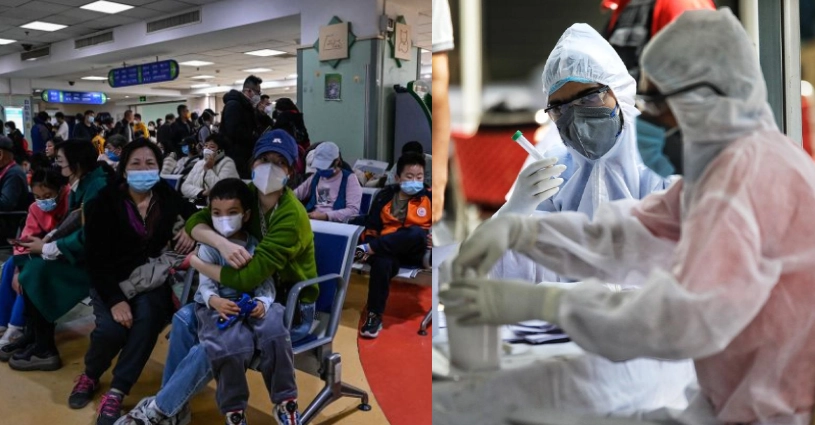Concerns are growing throughout the world as reports of an increase in respiratory illnesses from China are evoking memories of the early stages of the COVID-19 pandemic. The entire world is keeping a close eye on the situation, wondering where these infections came from and making comparisons to when the last coronavirus outbreak started.
China's Health Ministry has tried to calm people's concerns by saying that the rise in respiratory illnesses throughout the nation is not caused by a new virus. The World Health Organization (WHO), which has expressed concerns about the rise in "pneumonia in children" has released this clarification. Now, the question remains: what is causing the unexpected rise in respiratory illnesses in North China, if not a new virus?
A representative for the National Health Commission of China ascribed the rise to well-known pathogens, influenza virus (H9N2), rhinovirus, respiratory syncytial virus (RSV), adenovirus, and bacteria such as Mycoplasma pneumonia. These well-known culprits are known to result in lung infections, and China insists that no unusual or uncommon pathogen has been found in association with the current upsurge.
Since October, hospitals in China have noted an increase in the number of children admitted with bacterial infections, RSV, influenza, and the common cold. In order to gain a deeper understanding of the situation, the WHO has asked China for additional data, highlighting the importance of openness and information exchange.
Although there are worries about the possibility of a new epidemic, experts like Paul Hunter from the University of East Anglia minimize the chances. Professor Hunter points out that since there would be a higher incidence among adults, the infections do not appear to be indicative of a new virus. There have been reports of certain infections in adults that are associated with prior exposure and innate immunity.
Historically, viruses and flu strains with pandemic potential have often been produced by unidentified groups that cause respiratory illnesses. Both the SARS and COVID-19 outbreaks were preceded by reports of rare cases of pneumonia. The World Health Organization emphasizes that there is currently insufficient information to accurately estimate the risk of these pediatric respiratory illnesses that have been reported.
The world is keeping a close eye on China's developments, and the similarities to the early COVID-19 pandemic. These symptoms prompt worries about transparency and the need for current and precise data sharing between states and international health organizations. In the early stages of the COVID-19 pandemic, China and the WHO came under fire for how they handled information. This current circumstance emphasizes how crucial cooperation and openness are when dealing with possible health emergencies.
